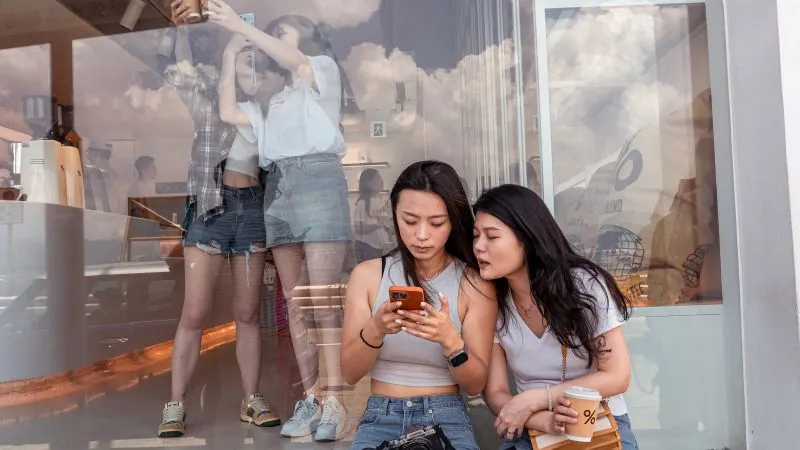
Xiaohongshu: How 'China’s Instagram' is Shaping Travel Trends Across Asia and Beyond
2024-10-10
Author: Wei
As travelers explore the vibrant streets of Hong Kong, they may stumble upon the Kennedy Town Playground, a seemingly unremarkable area that is quickly becoming a hot spot for tourists. This isn't due to its basketball courts, which locals often overlook, but rather the stunning views these courts provide of the city’s iconic skyline. For many visitors from mainland China, this location has transformed into a must-visit site, thanks to social media trends fueled by Xiaohongshu, also known as the Little Red Book.
The Power of Xiaohongshu
Xiaohongshu, China's answer to Instagram, has rapidly turned into a cornerstone for travel inspiration among its 300 million users. Tourists like Jiao Le from Beijing have shared their experiences, noting how the app outshines other platforms in its comprehensiveness and ability to highlight places off the beaten path.
China boasts a massive travel market with 1.4 billion potential travelers, yet many existing travel apps fail to offer localized content tailored for Chinese speakers. This gap has allowed Xiaohongshu to assert itself as an essential resource, reshaping how travelers explore both familiar and hidden gems across Asia and beyond. The app's ability to spotlight lesser-known locations means places that usually fly under the radar for Westerners are being discovered by Chinese tourists in droves.
Trendsetting Spots through Social Media Influence
The influence of Xiaohongshu extends globally. For instance, while Western tourists flock to the famous Little Mermaid statue in Copenhagen, Chinese travelers have recently gravitated toward Black Square, an artistic installation within an urban park. Similarly, in New York City, a nondescript bench in Central Park has gained fame due to its association with Mandopop icon Jay Chou, illustrating the app's penchant for linking pop culture with travel.
In Japan, the allure of Kamakura's train intersection stems from its feature in the beloved basketball anime “Slam Dunk,” a phenomenon resonating particularly with Chinese fans. Xiaohongshu not only shapes travel patterns but also connects travelers with cultural narratives.
Xiaohongshu's Growing Impact Despite Economic Challenges
Despite China’s slowing economy dampening travel desires, the recent National Day holiday saw a significant rebound, with 7.6 million trips in and out of the country, reflecting a 33.2% increase year-on-year. Many of these travelers relied on Xiaohongshu, which has become synonymous with not just trip planning but also discovering underrated destinations.
The unique phenomena of travel drawn from Xiaohongshu often remain relatively obscure outside of China, trapping these lively discussions and discoveries within the app's ecosystem. Its user base predominantly consists of Chinese nationals who engage in discussions primarily in Mandarin, providing little insight to non-Chinese speakers about these emerging travel trends.
Behind Xiaohongshu
Originating as a platform for sharing snippets of life, Xiaohongshu has blossomed since its 2013 founding by Charlwin Mao and Miranda Qu in Shanghai. Now a dominant player in the social media landscape, its users regularly post diverse content, ranging from beauty and fashion to, crucially, travel recommendations.
Local businesses have quickly caught on to Xiaohongshu's potential, using the app to connect with the Chinese community. For instance, Lobos, a tapas restaurant chain in London, is leveraging the platform to bolster visibility among tourists, adjusting menus based on popular dishes highlighted by users.
During the upcoming 2024 Summer Olympics in Paris, establishments are preparing to promote their Xiaohongshu popularity in Chinese, hoping to attract more visitors through this cultural bridge.
The Unintended Consequences of Popularity
However, as the popularity of certain spots rises, so too do the challenges for local communities. In Hong Kong, a newly popular café near the basketball courts has drawn crowds, often obstructing pathways and inconveniencing local residents. It’s a poignant reminder that while tourism can boost economies, it can also invite friction within communities.
One local resident, who wished to remain anonymous for fear of backlash, expressed concerns about the safety hazards posed by tourists spilling onto busy roads for photo ops. “It’s dangerous because it can cause accidents with cars coming through,” he noted, advocating for local authorities to implement traffic warnings to protect both residents and visitors.
In the rapidly evolving world of travel, Xiaohongshu stands as a testament to the power of social media in redefining not only destinations but the very nature of travel itself. As this phenomenon continues to grow, both the benefits and challenges will undoubtedly shape the future of travel in Asia and beyond.






 Brasil (PT)
Brasil (PT)
 Canada (EN)
Canada (EN)
 Chile (ES)
Chile (ES)
 España (ES)
España (ES)
 France (FR)
France (FR)
 Hong Kong (EN)
Hong Kong (EN)
 Italia (IT)
Italia (IT)
 日本 (JA)
日本 (JA)
 Magyarország (HU)
Magyarország (HU)
 Norge (NO)
Norge (NO)
 Polska (PL)
Polska (PL)
 Schweiz (DE)
Schweiz (DE)
 Singapore (EN)
Singapore (EN)
 Sverige (SV)
Sverige (SV)
 Suomi (FI)
Suomi (FI)
 Türkiye (TR)
Türkiye (TR)